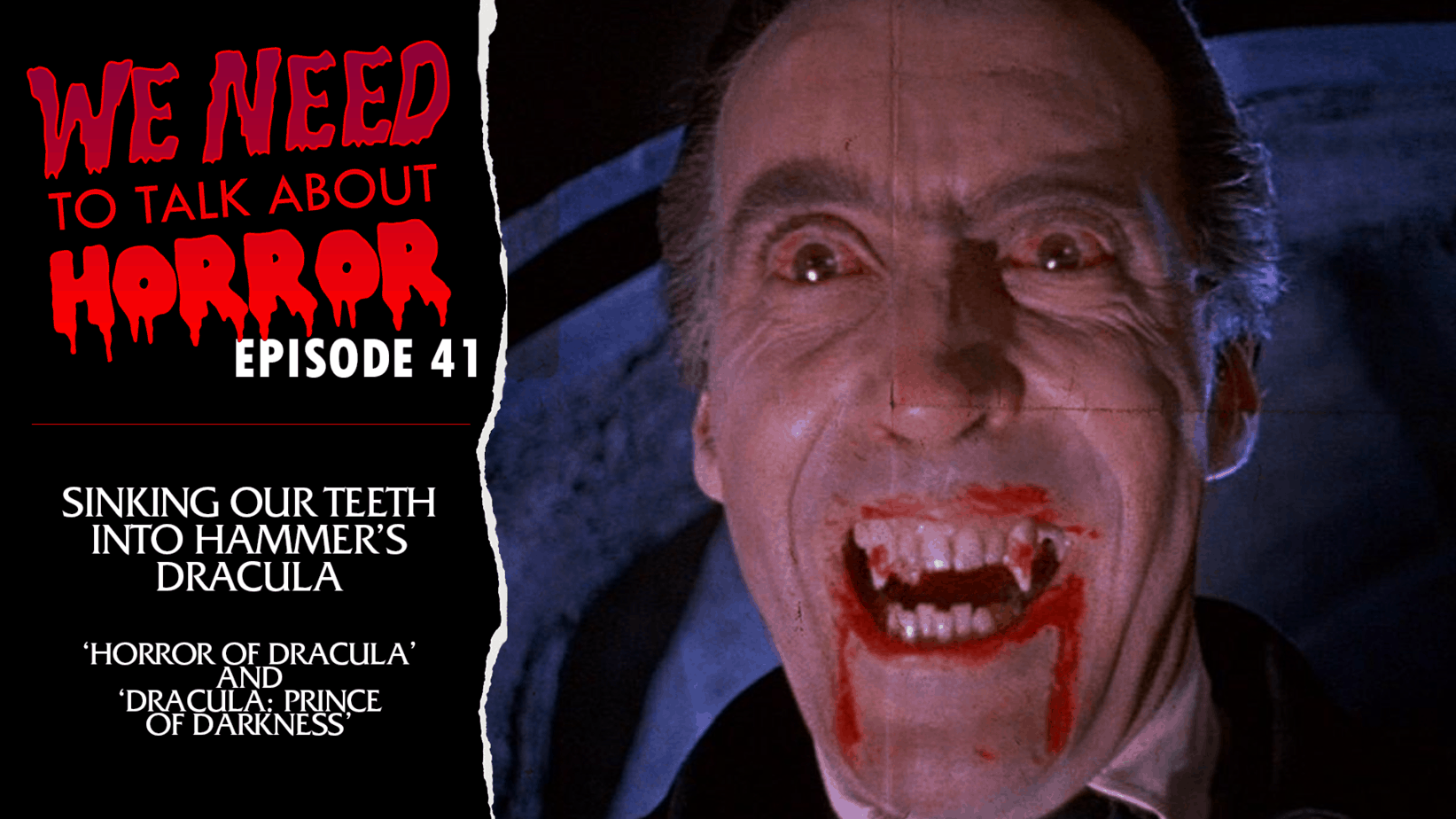Hammer Horror- Britain’s Studio of Blood: THE PLAGUE OF THE ZOMBIES
 The zombie has been the subject of films ever since White Zombie was released in 1932. Today, most people might associate zombies with a virus or infection that causes people to rise from the grave. Yet the original reasoning behind the dead rising up was voodoo. The first mention of corps cadavres or the “walking dead,” came from an article printed in Harper’s Magazine in 1889 written by Lafcadio Hearn. During Hearns travels in the Caribbean, he became educated by the villagers that a “zombi” was “something that causes disorder in the night.” This subject was written about in greater detail by William Seabrook, who traveled and wrote about voodoo rituals in Haiti. It is the power of voodoo rituals that cause men and women to do an evil Squire’s bidding in the Hammer classic The Plague of the Zombies. Join me as I take a look at another film from the studio that has been the focus all month long – Hammer Productions.
The zombie has been the subject of films ever since White Zombie was released in 1932. Today, most people might associate zombies with a virus or infection that causes people to rise from the grave. Yet the original reasoning behind the dead rising up was voodoo. The first mention of corps cadavres or the “walking dead,” came from an article printed in Harper’s Magazine in 1889 written by Lafcadio Hearn. During Hearns travels in the Caribbean, he became educated by the villagers that a “zombi” was “something that causes disorder in the night.” This subject was written about in greater detail by William Seabrook, who traveled and wrote about voodoo rituals in Haiti. It is the power of voodoo rituals that cause men and women to do an evil Squire’s bidding in the Hammer classic The Plague of the Zombies. Join me as I take a look at another film from the studio that has been the focus all month long – Hammer Productions.
An Intended Minor Zombie Film That Received Major Attention
When production began in July of 1965, Hammer planned on The Plague of the Zombies (working under the titles of The Horror of the Zombie and simply Zombie) to be a secondary film. Cutting the film’s budget dramatically compared to their top tear films (which didn’t have that high of a budget to begin with), Hammer brought in first time horror director John Gilling. Terence Fisher was usually the go to guy when it came to horror for the profitable studio, but no one, not even the studio, had hope in the picture. Previously directing a number of pirate adventure films for Hammer, Gilling seemed to have the cards stacked against him right off the bat. Filming was completed in just twenty eight days. Most of the interior scenes involved using old sets from previous films, but all of the exterior scenes were shot on location in Cornwall (the film’s actual location). When the movie was released in 1966 on a double-bill with Dracula – Prince of Darkness, critics and audiences applauded the stylized visuals and great acting. The praise for the acting was thanks to veteran actor Andre Morell. As a gimmick to appeal to the younger audience that frequented the bloody double feature, “zombie eyes” were handed out to the girls while the boys received “vampire fangs.”
The Plague of the Zombies (1966)
Sir James Forbes (Andre Morell), a respected doctor in London, is asked by his former student to travel to Cornwall to help him with a series of mysterious deaths. Dr. Peter Thompson, explains to his former teacher and daughter Sylvia, that the villagers will not let him conduct an autopsy on the bodies even though he suspects something strange. When Thompson’s wife Alice is seen at night being carried by a man who died a few days back, Forbes and Thompson begin to investigate the possibility of someone experimenting with voodoo rituals.
Right off the bat, one of the first things that stands out to a viewer is the intense drum music. Many times throughout the film, Gilling uses to great effect, intense tribal drumming. At times, it is almost startling when you first hear the beating of the drums. Another aspect that is immediately apparent is the acting and writing of the character of Forbes. His confident attitude and biting comments are delivered perfectly by Andre Morell. Yet why am I going on about the acting and music. This is a zombie movie … you want to read about the zombies. Though they aren’t as abundant as they are in Night of the Living Dead (released just two years after this film), the zombies in Plague have a unique look that makes up for the lack of quantity. It is said that the zombie make-up was created by using tissue paper coated with latex rubber, then covered with an Earthy powder. To achieve the almost all white eye, tiny pin-holes were put in contact lens to shrink the pupils to just barely a dot. The resulting look has a really creepy appearance. Their decayed look is most evident in a scene that is the highlight of the whole film. In a dream sequence involving the young Dr. Thompson, a number of the undead rise up to attack the doctor in the town’s graveyard. The director and cinematographer do a great job adding to this creepy sight by including fog, green lights, and several camera shots that are on a disorienting angle. The film certainly sets a mood that is carried through successfully to the film’s fiery finale. I didn’t care much for the lead girl in the film, as she is under written and over acted by Morell and John Carson in his villainous role. Once again, Hammer takes a classic horror staple – the zombie- and imbues it with their signature Gothic look. While it may have many scenes that seem to go on a bit too long, The Plague of the Zombies excels when it is giving the audience the good stuff: The Zombies!
All month long, Turner Classic Movies has been showing Hammer Horror films every Friday night. Make sure to catch the last group of films this Friday as October comes to a close.





